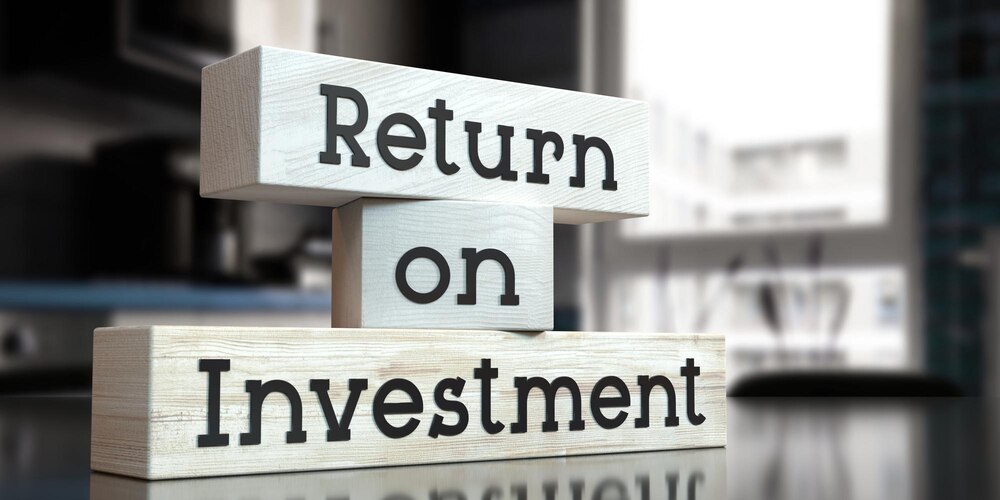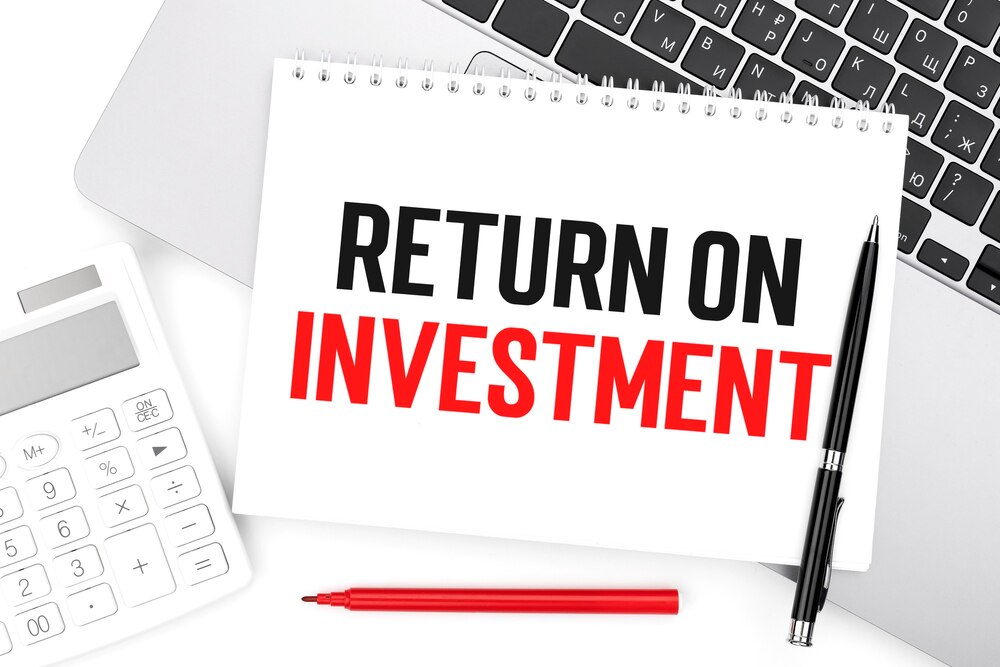Return on Investment (ROI) Explained: How to Calculate, Improve & Maximize in 2025
Meta Description of SEO:
What is Simple Return on Investment (ROI)? Discover how to estimate the ROI, enhance it, and increase your financial gain in 2025 using the effective methods and tools.
What is Return on investment (ROI)?
Return on Investment (ROI) is one of the major financial indicators that can be applied to determine how profitable an investment can be. It tells how much gain or loss is produced in comparison with the invested amount. Depending on whether you are running a business, marketing campaign or personal portfolio, ROI is one of the ways of establishing whether your money is in the right hands.
ROI in the most basic definition, would address a base question of “Am I deriving sufficient value out of what I have expended?”
The reasons ROI will be vital in 2025
In 2025, more than ever, we have to understand Return on Investment. The urgency to make decisions based on analysis of data has been fueled by these factors that have compelled the need to gather information and analyze it before making any move: a swift change in technology, rise in the inflationary pressure and competitive world market.
Whether creating a tech startup or leading expansion planning at a Fortune 500 corporation, professionals are using ROI as the planning tool that leads to budgets, investment, and growth. Individuals, specifically, need to monitor their ROI on savings, real estate, or readership in order to simultaneously develop themselves and become more financially secure.

Main Formula to Calculate the ROI
The standard ROI calculator is:
ROI = (Net Profit ÷ Investment Cost) ×100
This formula presents ROI in percentage and thus, it is easy to compare two or more investment opportunities.
A Closer Look at ROI Formula
In order to decipher Return on Investment:
Net Profit = Income Revenue (Revenue)- Expenses
Cost of investment = Sum initially invested
As an example, $1,000 investment and returns of 1,300 provide a net profit of 300; the subsequent ROI is 30%.
However, ROI does not always remain constant, it generally fluctuates with time, risk, and time of returns which should all be considered during the real analysis of finance.
Kinds of Return on Investment
Various types of Return on Investment exist, each of which only applies to a certain sphere:
- Financial ROI Direct money incomes out of money investments
- Marketing ROI: Sales made as a result of advertisement or promotion activities
- Social ROI (SROI) Social or environmental outcome to investment
- Learning ROI- Value of what was learnt in training and its price
There is no doubt that it would make sense to understand the ROI to be monitored so that decisions are made and no confusion is present.

Examples of Calculations of ROI in Real Life.
Business Investment
A small company invests five thousand dollars on a new software. It saves the company 2000 dollars of labor costs and increases sales by 3000 dollars every year. Net gain: 5000. ROI: 100%.
Personal Finance
You buy something worth the amount of ice cream at 2000 and it increases to 2600. Profit: 600 dollars. ROI: 30%.
These have demonstrated that Return on Investment gives a universal perspective that can be used to measure success.
Enhancing Return on investment
The increase of your ROI can either be done by lowering the cost of investment or enhance returns.
Proven Ways of Increasing ROI:
- Get rid of unproductive costs
- Automatic without routine work
- Investing in projects with high returns
- Periodical adjustments and improvements of strategies
Automation and the AI ROI
It is through AI-driven analytics and automation that in 2025 Return on Investment is being redefined. It helps businesses to make quicker and wiser decisions using predictive tools so that they can reduce their cost and improve their results with little input.
Machine learning assists in predicting ROI scenarios, do virtual campaign testing and provide real-time recommendations to optimise returns.

ROI Measurement Tools That Will Work in 2025
Since tracking of ROI revolves around data, a number of tools can be used to ease the process as follows:
- Marketing ROI Google Analytics
- QuickBooks (ROI Of Finances)
- Data Visualization / Power BI / Tableau
- Salesforce (ROI Metrics- Linked CRM)
Those platforms provide in-depth ROI dashboards that are business-specific.
Optimizing ROI in Business
In order to optimise Return on Investment in business:
- Establish goals of each investment
- Conduct a cost-benefit analysis in detail
- Use of diversifications to eliminate risks in investments
- Invest money in the scalable areas
The greatest ROI is witnessed in companies that reacts fast to the market changes but at the same time concentrating on areas that have significant impacts.
The best way to maximize ROI in Marketing
The cost of marketing is frequently high, and this aspect can give a big boost in ROI and, by extension, profitability.
Tips on increased marketing ROI:
- Appeal to the target market using information
- Test A/B campaigns
- Be religious when tracking conversion rates
- Use SEO, content marketing and automation
By investing 1$ on a campaign that generates 3000$ of new business, it gives an ROI of 200%. Having these metrics in sight guarantees strategic marketing decisions.
Startups Return On investment
Return on Investment is a survival kit in the case of startups with a small amount of funds.
Founders must:
- Delivery Minimum Viable Products (MVPs)
- Scaling can be based on testing assumptions
- Angel investments: invest in plain ROI plans
- Rediscover preliminary pivoting or doubling down
Bright returns are required in low-budget decisions. ROI is good to show that a business idea is worth following.
Shortcomings of ROI as a Measure The shortcomings of ROI as a measure are the following:
Although Return on Investment has its advantages, it has shortfalls:
Doesn t pay attention to time: 20 percent in 1 month is better than 20 percent in 2 years
Ignores risk: Risk is much the same two investments can be equally ROI and risky
Intangible effects: ROI may not apply directly as employee satisfaction, brand loyalty or innovation
In that way, it is preferable to take ROI as a combination with other financial indicators.
ROI vs. Additional Financial Measures
What is the position of ROI as compared to others?
- Metric Description Focus Description
- ROI Return versus Investment Profitability
- ROE Return on Equity Return to shareholder
- ROA Return on Assets Asset effectiveness
- NPV Net Present value Money value of time
- Payback Period Recovery Period Risk
One is used and the other is used. ROI only provides a part of financial puzzle.
Monitoring the Trends of ROI in 2025 and Onwards
Return on Investment is going to shape into the future with novel challenges and technologies. Such trends are:
- Predictive analytics taking the place of backward-looking measures
- The concept of sustainability as the add-on layer of ROI
- How Decentralized finance (DeFi) is transforming investment terrain
- Being ROI-oriented in the year 2025 also means being innovative but not losing good fundamentals.

More popular questions (FAQs)
-
What will represent as a good percentage ROI in 2025?
Depending on the type of industry, the acceptable good ROI would be 15 percent and above. Investments in tech and finance usually target at and above 25 percent.
-
Is it possible to have negative ROI?
Yes. When Return on Investment is negative, it signifies a loss on invested money.
-
How frequently does ROI have to be considered?
Most businesses on a quarterly basis, but high stakes investments could also require monthly or weekly checks.
-
Which are the influences of ROI?
ROI depends on the size of investment, revenue, type of market as well as time of investment.
-
Would ROI work in personal life choice?
Absolutely. One can apply ROI in terms of education, time management and even relationships.
-
What is the greatest PITFALL in ROI analysis?
Failure to consider the cost of concealment or the time that is taken to realize returns.
Conclusion: Future Proofing Your Return on Investment Strategy
Return on Investment is not merely a measure but it is an attitude. In future, ROI continues to be the key instrument of success measurement, resource allocation, and construction of future-proof strategies as we go through 2025.
Finding out how to calculate, enhance, and maximize ROI enables individuals and business establishments to make data-supported smarter decisions that result in sustainable growth.
To keep in touch with us for Daily updates :
Also follow our social medias to be up to dated: https://facebook.com/money.mexa
To get daily update on please visit Moneymexa.com regularly.

